Photo Guide: Round the clock at Dainik Bhaskar
How is a newspaper produced? Alok Singh spends time with the Bhaskar team who handle production control, scheduling and job flow. Not to mention printing, and despatching and deliveries
14 Jun 2010 | By Alok Singh
| At a glance: Dainik Bhaskar in Jaipur PrintWeek India spends a night at the newly commissioned Dainik Bhaskar’s newspaper printing site in Shivdaspura in Jaipur, Rajasthan. Named Print Planet, the site is located on the NH-12, Jaipur-Kota national highway, 22 kms away from the city office of Dainik Bhaskar. Vinay Shukla, Unit head, production at Dainik Bhaskar Jaipur said: We print four variants of satellite edition, two variants of city edition of Dainik Bhaskar, Jaipur and one edition of DNA Jaipur along with their respective suppliments. We have the installed capacity to print 32 pages back to back all colour printing; with three books production duly inserted. The production lines are capable with the additional features of–popouts, dropouts, flaps–among others. We at Bhaskar Print Planet, Jaipur, roll out approx. One million printed copies per day in two shift operations. Alok Chitransi, state production head, Rajasthan says: We work on zero-error principle. Our company’s philosophy is: work distribution that entails total ownership and accountability. The work at the site is guided by a five-committee ownership model:
|
22 stages while printing on the KBA Prisma 4/1 press

Stage 1
The press is made ready by a preventive maintenance team. The time line: From 1pm to 9pm. Under the supervision of Ranjit Chaku, the newspapers print production process starts at 9pm. This is usually preceded with a meeting and discussion with the preventive maintenance team, day production team and the night production team along with the engineering team.

Stage 2
The handing over to production team starts with a check list of previous day’s production logbook, reports, analysis of complaints, check of cyclic schedules including mechanical, electrical and electronics. By 8pm the handover is complete with double check.

Stage 3
Pages are transmitted from the Dainik Bhaskar office in the Jaipur city through FTP. The data is analysed and outputted by the pre-press department on the two Krause LSJet 300 violet CTPs enabled with NetLink RIP interface for one-bit-TIFFs.
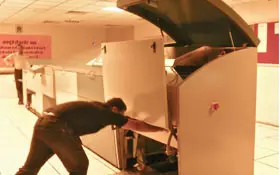
Stage 4
Plates are loaded on the Krause LSJet 300 violet CTP, which has a capacity to process 300 plates per hour. With the integrated digital workflow via the RIP interface all machine setups like resolution; laser power; plate and imaging size; and exposing speed can be changed automatically.
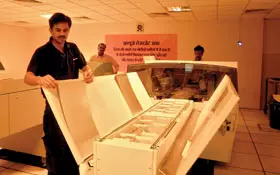
Stage 5
Plates are punched and bent usingNela VCP inline automatic plate in-feed navigation and integrated Vision alignment with high speed plate production system. The processed plates are automatically pre-registered in the VCP allowing video cameras to locate the exposed register marks by using a closed loop image-processing and micro-stepping system to bring the plates into register. Once positioned, the plates are punched, bent in one-step operation and placed into the stacking station. The plates are sorted according to the bar codes embedded in the plates within the exposing process in an eight-bin sorting system.
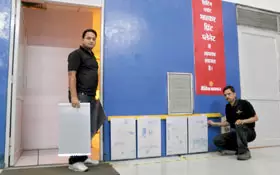
Stage 6
The plates are taken outside the prepress room. They are racked outside the CTP unit – opposite to the press, which are ready and picked from here to be mounted on the press.
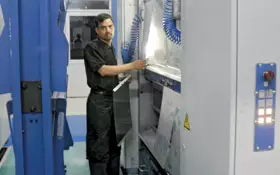
Stage 7
The operators say that the press is a plug-and-play machine. The operational sequence is simple and easy. Here the plates are being clamped on to the plate cylinders. A similar sequence is followed at the time of plate changing. The operator conveys the plates and inserts them manually into the PlateTronic feed magazines and removes the used plates.
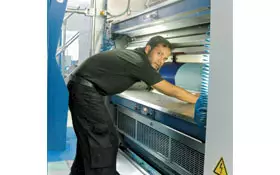
Stage 8
The plates are mounted on the plate cylinders. A similar sequence is followed at the time of plate changing.
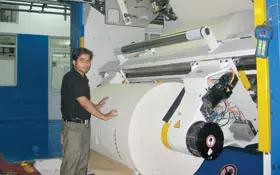
Stage 9
In the mean time the reel preparation is under process on the reel stands. The reel stands are desiged facing each other with two rotating and fully motorised adjustable arm. The reel stands have distributed drives for the subassemblies and folders for hassle free loading and settings. Pre-installed processing stations reduce on-site commissioning time.
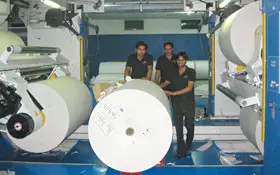
Stage 10
The reel stands are core driven, flying paste type and controlled in a closed loop system. Here the reels are transported by KBA semi-automatic PATRAS (reel logistics) from one unit to another for loading. Processing stations are linked to each other and to the control console.
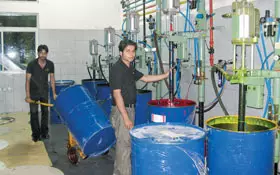
Stage 11
The ink pumping section is directly connected to the press. Here the inks get transported through fully automatic Lincoln inks pumps via pipes to the inks ducts in the press. The system has an auto-warning mechanism to notify the empty ink barrels. It takes a few minutes to remove empty ink drums and replace them with new ones.
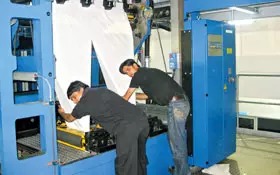
Stage 12
Parallel to the earlier process, the
machine is webbed according to the pagination and webs are threaded to the folder nippings.
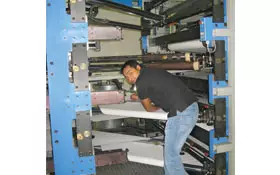
Stage 13
Level three has a paper turning unit. Here the webs are slit into the ribbons and then the ribbons are turned either to S1 or S2 directions as per product requirment.
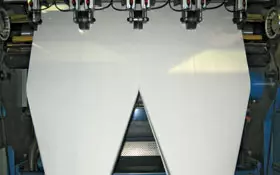
Stage 14
As the press slowly starts to roll, the blank webs can be seen on the former at level two – this is before the actual prints begins.
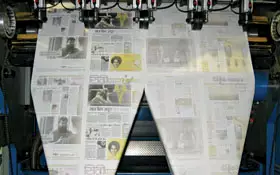
Stage 15
The Press is about to roll. As the press gains momentum, impression gets on and we can see the print on the webs at the former board.
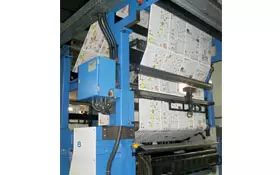
Stage 16
For quality controls the press is equipped with high-end QI camera, that controls the registration after every eight copies in the closed loop system with a time lag of 0.03 seconds at the top speed of 85,000 cph.
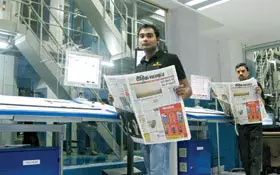
Stage 17
The Quiet room is a sound proof glassroom located in front of the press towers. It houses a pair of EAE consoles which is used for controlling the KBA Prisma. The consoles for the KBA Prisma are configured for job-scheduling and press pre-set system enables to provide greater assistance in maintaining, operating and having access to machine data. The EAE console offers optimal user-friendliness of the human-machine interface.
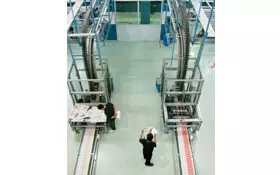
Stage 18
The printed newspapers are carried by two IDAB Wamac mailroom lines integrated with the folder of KBA Prisma press. The mailroom’s conveyor belts carry copies and feeds to the gripper. The mailroom compromises WNC v5 information systems for full control of the mailroom process, from KBA Prisma folder to the loading bay.
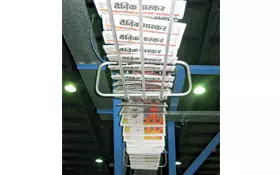
Stage 19
Printed copies of the newspaper under transit by the IDAB Wamac PCC 903 high-speed single copy gripper lines on their way to TS 800 stacking and packing lines. This concludes the transport of product to the loading bay.
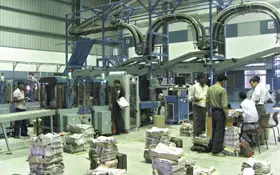
Stage 20
The IDAB Wamac mailroom at Dainik Bhaskar is equipped with fully automatic high-speed stacker and overall control of these stacking lines are enabled with bundle addressing, shrink wrapping and strapping ready for final delivery on the go.

Stage 21
Finished bundles of the newspaper are loaded on the trucks which are waiting in the loading bay. The newspaper is ready for despatch.

Stage 22
Trucks are queued at the loading bay of Bhaskar print planet ready to deliver the finished bundles to their respective destination.











 See All
See All